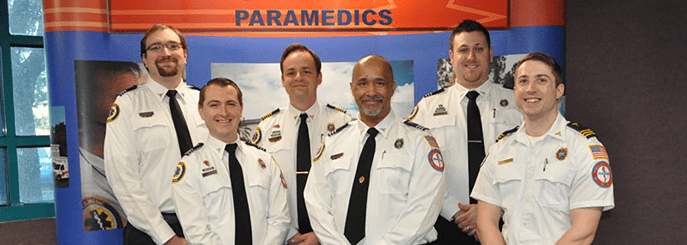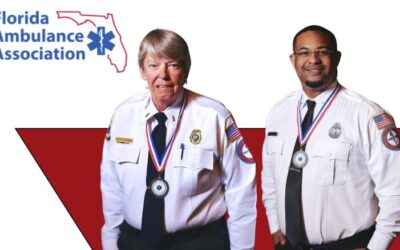Last year, Sunstar Paramedics merged training and education with quality assurance and specialty services. The department is overseen by director Jeremy Tinter who felt alignment was key to streamlining the flywheel of the operation.
The new Training Center is recognized by the State of Florida to provide AHA, NAEMT, and original courses. As a result it is now able to provide continuing education credits to healthcare professionals.
As part of the streamlining process, the department developed online clinical testing to help with recruiting new EMTs and Paramedics. Those who pass are then admitted to a rigorous training academy. This comprehensive program consists of didactic and psychomotor simulations with high-fidelity mannequins, and patient based scenarios to help them be better trained and prepared when they are released to work in the community. Outside clinicians may attend the Sunstar Training Academy as well, some have even implemented a few of our processes in their own departments. Recently, the department developed a three day BLS Training Academy to support the recent addition of basic life support ambulances in Pinellas County.
The Training Academy has shown great success in the past year. The Paramedic Capstone testing has currently increased to a 95% pass rate. In this streamlined system, provisional EMT’s are clear from orientation in an average of 45 days, with provisional paramedics clearing in average of 75 days. This allows us to continue to have the resources ready and available as our county grows.
The Clinical Services department also manages Pinellas County’s CAMTS accredited ground critical care transport team. This team is a high-volume, high-acuity critical care team whose calls for service exceeded 1250 calls in 2016. The department oversees a robust competency program for all Critical Care Paramedics, EMT’s and Registered Nurses. This training consists of specialized courses, as well as original content on topics such as ventilator training, balloon pump operation, and advanced airway management.
The Training Center partners with the AHA to provide free monthly CPR trainings to the local schools and neighborhoods and has trained hundreds of citizens on hands-only CPR, cardiac event recognition, and stroke awareness. They also provide CPR demonstrations to organizations like Leadership Pinellas, Youth Leadership and government employees. The training center is currently working on becoming a CAPCE center (Accreditation for Pre-hospital Continuing Education), which would allow them to provide high-quality educational content nationwide.
The department also spearheads initiatives in the county that help to deliver better service to hospitals and patients in our community via data analysis. They have received the AHA Mission Lifeline award the past several years by gathering and measuring outcomes on heart attacks, strokes and cardiac arrest survivors. The department has twice obtained the AHA “Gold” status for the system and is on track to achieve “Gold Plus” in 2017.
In regards to the QA, the department prides themselves on 100% QA patient chart review, and provides real time feedback to crews. This data is used to create monthly education campaigns and also drives content for future training.
Jeremy is data driven and felt that all members of his department should have performance measures based on their operational, safety and clinical procedures. Each Field Training Officer receives an individual report card every month which generates a comprehensive scoring system that is used in internal career advancement, promotions, and commendations.
“EMS in the 21st century moves at an incredible pace”, proclaims Mr. Tinter, “The ability to keep up with a rapidly changing clinical landscape requires several different areas to operate in unison. The new growth of the department is better able to communicate with all stakeholders a consistent message of professional, clinical and educational excellence”. This translates to more efficient, better trained folks out there answering calls for help.



